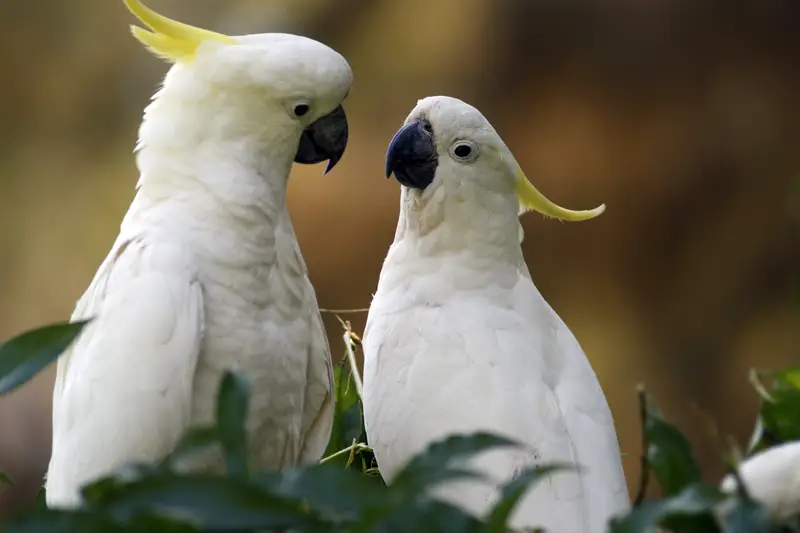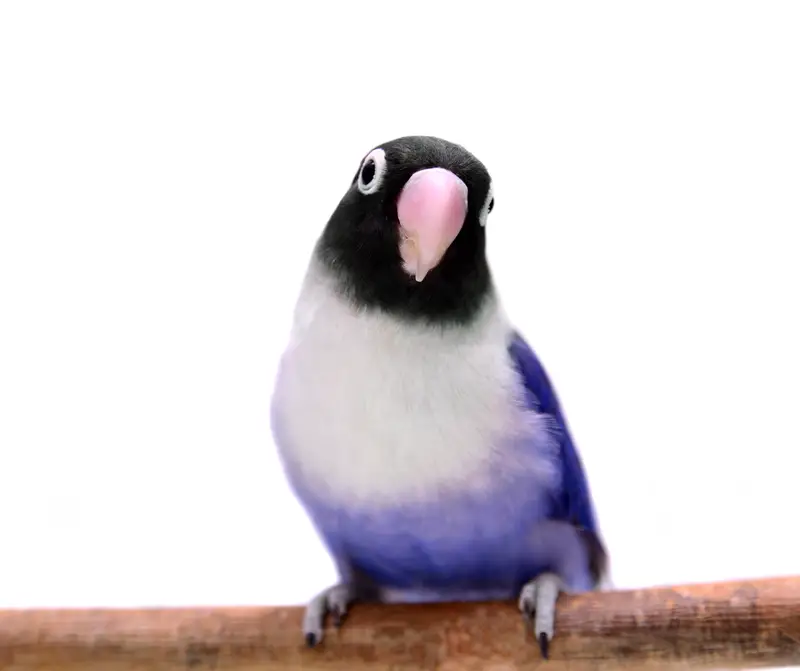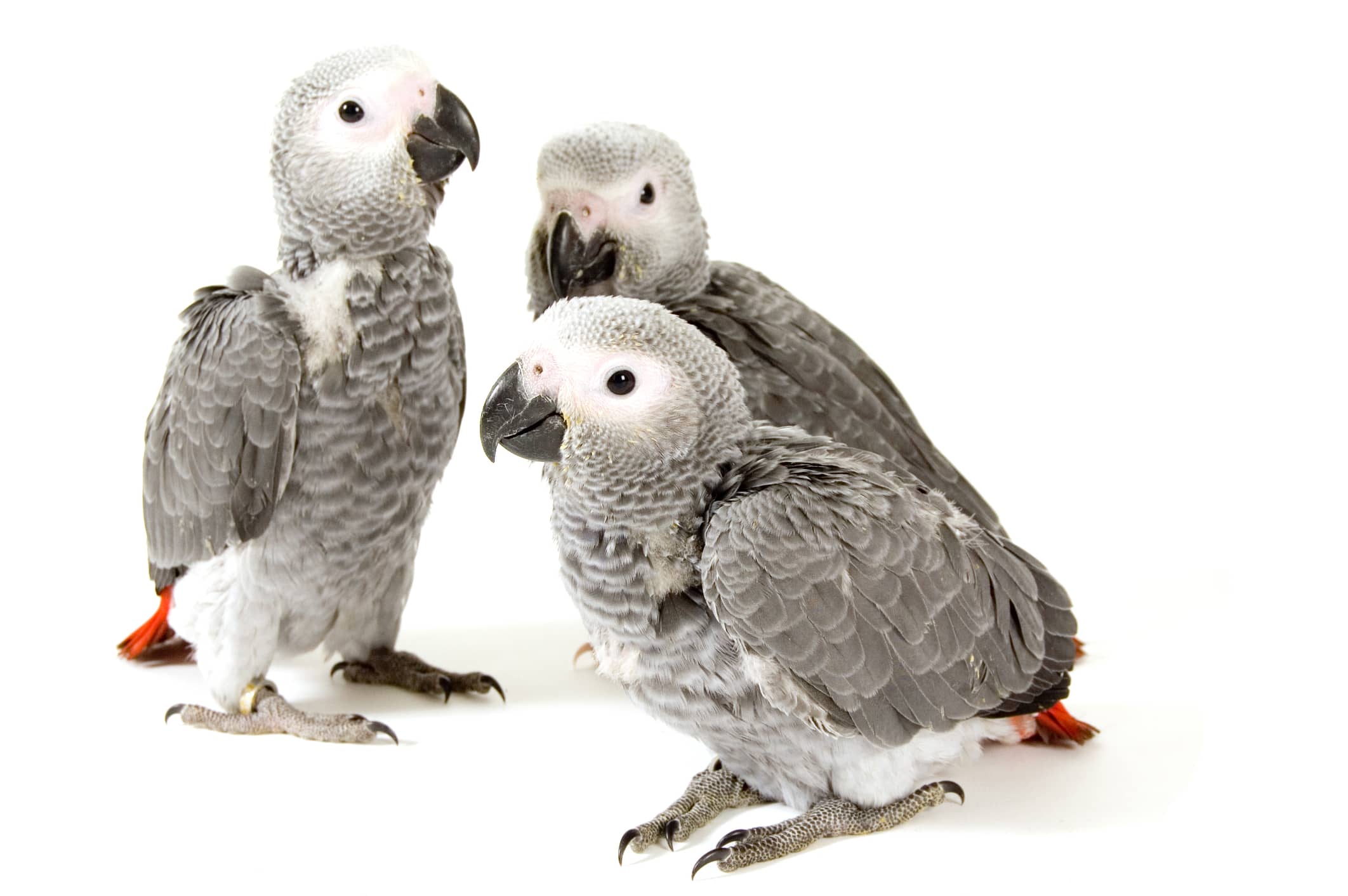Love Birds: A Colorful and Affectionate Addition to Your Family
- May 15, 2023
- 6:26 pm

Species Overview
Also Known As: Peach Faced Love Bird
Scientific Name: Agapornis
Adult Size: 5-7 inches
Life Expectancy: Up to 20 years in captivity
Is The Love Bird a good pet?
- Affectionate and Bonding
- Vibrant and Colorful
- Playful and Entertaining
- Vocal and Interactive
- Limited space requirement
- Long Lifespan
- High noise level
- Can be messy and produce feather dust
- Need a lot of Social interaction
- A challenge to train
- Can get aggressive
- Long-term commitment
These tiny bundles of joy bring a burst of color and personality into your life. With their vibrant plumage and affectionate nature, lovebirds are like living confetti that never fails to brighten your day. Picture this: a miniature parrot perched on your shoulder, whispering sweet nothings in your ear (okay, maybe not literally, but you get the idea). They’ll wiggle their fluffy feathers, nuzzle against your cheek, and steal your heart with their adorable antics. Lovebirds are the winged comedians of the avian world, delivering a daily dose of laughter and love that will leave you smitten.
General Information
Hold on to your feathers, folks, because we’re about to dive into the fascinating world of lovebirds! These pint-sized parrots are like a burst of sunshine in a beak. Standing proud at just 5 to 7 inches, they may be small, but boy, do they have personality! With their vibrant colors and playful antics, lovebirds are the living proof that good things come in small packages. They’re like the feathery equivalent of a tropical vacation, bringing a splash of color and tropical vibes into your life.
Now, let’s talk about their wardrobe. Move over, fashionistas, because lovebirds are the true trendsetters of the avian world. Their feathers come in a kaleidoscope of shades, from passionate reds and sunset oranges to dreamy blues and lush greens. It’s like having a fashion show in your living room! And let’s not forget their signature style: the adorable heart-shaped face mask that adds a touch of mysterious allure. With their vibrant plumage and trendy fashion sense, lovebirds are the feathered divas that will make heads turn wherever they go.
But there’s more to lovebirds than just looks. These little social butterflies have hearts as big as their personalities. They crave companionship and thrive on interaction. If you’ve got the time and love to spare, a lovebird will be your loyal sidekick, ready to embark on all kinds of adventures with you. They’ll serenade you with their sweet songs, chirping melodies that could rival any chart-topping hit. And when it comes to playtime, lovebirds are the masters of fun. They’ll hop, skip, and jump around their cage or flutter around the room, exploring every nook and cranny with unbridled curiosity. Get ready for a non-stop party with a lovebird as your co-host!
Oh, did I mention their name? Lovebirds weren’t named just for the sake of it. These birds are all about love and romance. They form deep, lifelong bonds with their chosen partners and engage in adorable displays of affection. You’ll catch them preening each other’s feathers, sharing tender beak-to-beak kisses, and even snuggling up for a cozy nap. If you thought Romeo and Juliet were the epitome of love, wait till you witness the heartwarming romance of a lovebird couple. They’re the real-life love story that will make your heart melt with time watching these amazing birds.
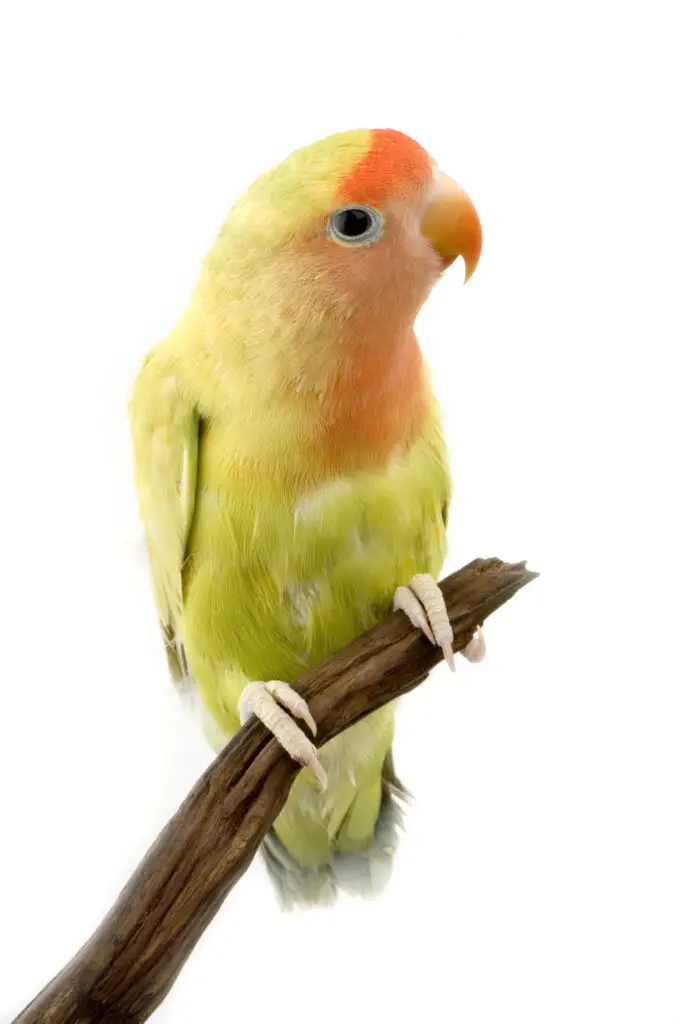
What food do Love Birds eat?
These colorful connoisseurs have a taste for the finer things in life, and their menu is as diverse as a buffet at a birdie banquet. So, what’s on their plate? Well, lovebirds are no birds of feather when it comes to their culinary preferences. Their diet consists of a delightful medley of seeds, fruits, vegetables, and even the occasional treat.
Seeds are the lovebirds’ mainstay, like the superstar of their culinary show. They love to peck away at a mix of seeds, with favorites including sunflower, millet, and safflower seeds. It’s like having a bird-sized trail mix on the menu! But lovebirds aren’t just about crunching on seeds. They’re like health-conscious foodies, making sure to incorporate a variety of fresh produce into their diet. Fruits like apples, grapes, and strawberries add a juicy sweetness to their meals, while leafy greens such as spinach, kale, and lettuce provide a dose of leafy goodness. It’s like a garden salad with a side of fruity bliss!
Now, let’s talk about the treats—the cherry on top of the lovebird’s gastronomic adventure. Lovebirds have a soft spot for occasional indulgences, and they’re not afraid to let loose and enjoy a tasty morsel. Whether it’s a nibble on a piece of corn on the cob, a lick of honey, or a small piece of whole-grain bread, they know how to savor the flavor. These little foodies appreciate the importance of balance, making sure to enjoy treats in moderation alongside their healthy main course.
Love Bird Price
The price of a lovebird can vary depending on various factors such as the bird’s age, color mutation, and breeder location. On average, the cost of a lovebird can range from $50 to $200. However, certain rare or highly sought-after color mutations or hand-raised lovebirds can have higher prices, reaching several hundred dollars or more.
It’s worth noting that in addition to the initial cost of purchasing a lovebird, there are ongoing expenses to consider, such as a suitable cage, toys, food, and regular veterinary care. Providing a proper and enriching environment for your lovebird’s well-being should be a priority.
When acquiring a lovebird, it’s essential to research reputable breeders or consider adoption from bird rescues, shelters or online using websites such as Petfinder. Remember, the price of a lovebird is just one aspect to consider, and ensuring the bird’s health, socialization, and overall welfare should be the top priority.
How big are Love Birds?
Standing proud at a mere 5 to 7 inches, they’re the feathered superstars that prove that good things come in small sizes!
But don’t let their small stature fool you—lovebirds are like tiny powerhouses of adorableness. They’re like the compact cars of the bird kingdom, fuel-efficient and ready to zip around your heart. With their compact build and short but sassy tails, they’re the ultimate combination of cute and confident.
Love Bird Temperament
Prepare to be charmed by the delightful temperament of lovebirds! These feathered bundles of joy are known for their affectionate and lively nature. Lovebirds are like the sunshine on a cloudy day, always ready to brighten your life with their vibrant personalities. They form strong bonds with their human companions and thrive on social interaction. Lovebirds are the true lovebugs of the bird world, showering their owners with kisses, cuddles, and endless love. They’ll nuzzle against your cheek, preen your hair, and show their affection in the sweetest ways possible.
But that’s not all—lovebirds are also known for their playful and entertaining nature. They’re like the feathered acrobats, always up for a show. Whether they’re hanging upside down from their perches, engaging in daring flips, or showing off their dance moves, lovebirds are the entertainers that will keep you captivated. They have an insatiable curiosity and love to explore their surroundings, turning even the simplest objects into their personal playground. With their energetic spirit and joyful chirping, lovebirds are the living proof that happiness comes in feathery packages.
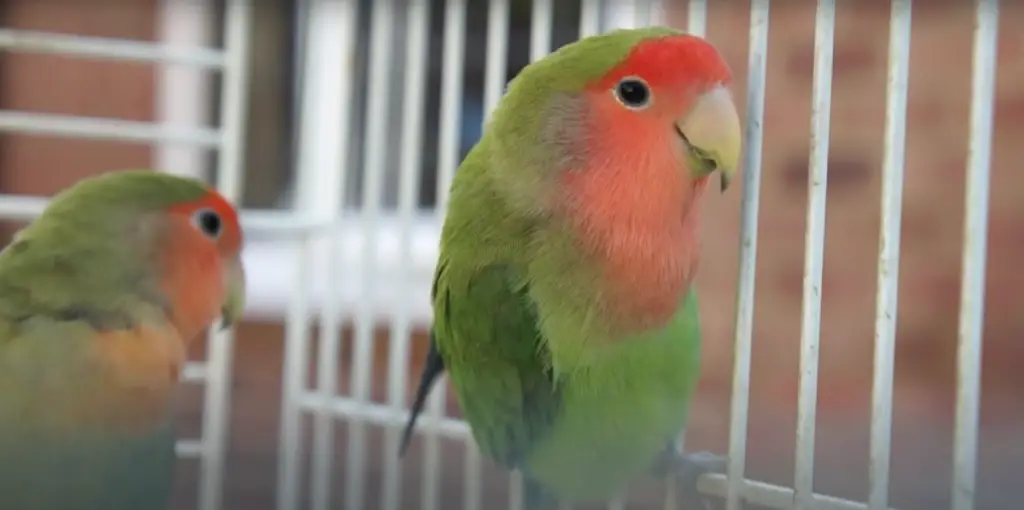
The Benefits and Challenges of Owning a Love Bird
Pros of Owning a Love Bird
Very Affectionate and bond well
Lovebirds are known for their strong pair bonding tendencies and the ability to form deep connections with their owners. They can become affectionate companions, enjoying cuddling, preening, and interacting with their human caregivers.
Vibrant and Colorful
Lovebirds come in a variety of striking colors, showcasing beautiful plumage. Their vibrant and eye-catching appearance adds a splash of visual appeal to any living space.
Playful and Entertaining
They’re naturally playful birds. They enjoy exploring their surroundings, playing with toys, and engaging in activities that keep them mentally and physically stimulated. Watching their lively antics can be highly entertaining and bring joy to their owners.
Vocal and Interactive
Lovebirds are vocal birds and can mimic sounds and even some words with proper training and socialization. Their chattering and chirping can create a lively atmosphere in your home. They also love interactive play and can learn tricks, providing a rewarding and engaging experience for both the bird and its owner.
Limited Space Requirement
Compared to larger parrot species, lovebirds require less space, making them suitable for individuals living in apartments or homes with limited room. They can thrive in well-sized cages or aviaries, provided they are given enough out-of-cage time for exercise and socialization.
Long Lifespan
Lovebirds have a relatively long lifespan compared to some other small pets. With proper care, attention, and a nutritious diet, they can be cherished companions for many years, bringing happiness and companionship to their owners.
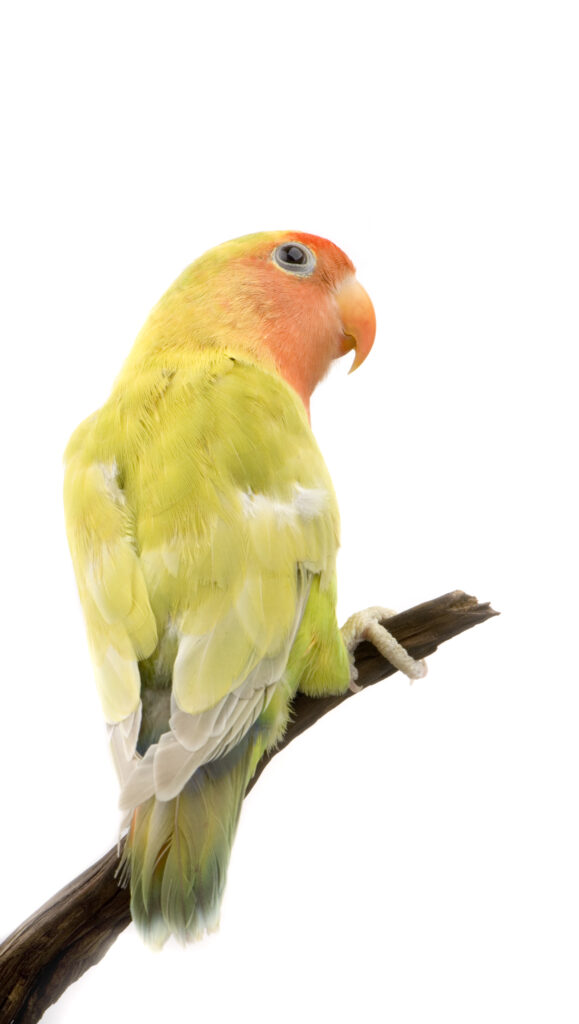
Cons of Owning a Love Bird
Noise Level
Lovebirds can be noisy and vocal, especially during their active periods or when seeking attention. Their loud calls and chirping may not be suitable for individuals who require a quiet living environment or have noise-sensitive neighbors.
Mess and Feather Dust
Like other parrots, they can generate feather dust and create a mess with their food, droppings, and shredded toys. Regular cleaning and maintenance of their living space are necessary to keep the environment clean and hygienic.
Need for social interaction
Lovebirds are social creatures and require regular interaction and companionship. If left alone for extended periods, they can become bored, stressed, or exhibit behavioral issues. Providing adequate socialization and mental stimulation is essential for their well-being.
A challenge to train
While lovebirds are intelligent, they can be stubborn or challenging to train compared to some other parrot species. Consistency, patience, and positive reinforcement methods are necessary for successful training and behavior modification.
Potential Agression
Lovebirds, particularly during their hormonal periods or when feeling threatened, may exhibit territorial behavior or aggression towards other pets or humans. Proper socialization, handling, and understanding their body language are crucial to prevent or address aggressive tendencies.
Long-term commitment
Lovebirds have a relatively long lifespan, which means they require a long-term commitment from their owners. Before getting a lovebird, consider the responsibilities associated with their care, including providing a suitable environment, regular veterinary check-ups, and meeting their emotional and physical needs throughout their life.
Love Bird Lifespan
In the wild, lovebirds generally have a shorter lifespan compared to those kept in captivity. In their natural habitat, lovebirds face various challenges and predators, which can impact their longevity. On average, lovebirds in the wild have a lifespan of around 10 to 15 years.
On the other hand, lovebirds kept in captivity can live significantly longer with proper care and a suitable environment. With a balanced diet, regular veterinary check-ups, and a stimulating living space, captive lovebirds can live well into their 20s or even 30s. Some lovebirds have been known to reach the remarkable age of 30 years and beyond when provided with optimal care and attention.
It’s important to note that these are average lifespans, and individual lovebirds may vary. Factors such as genetics, diet, exercise, stress levels, and overall well-being play a role in determining a lovebird’s lifespan.
Common health issues and How to avoid them
These feathery wonders are known for their vitality, but like any living creature, they can encounter a few health hiccups along the way. Fear not, for we’re here to shed light on some common lovebird health issues and how to keep them at bay.
First up, let’s talk about respiratory infections—a sneaky foe that can ruffle your lovebird’s feathers. These can be caused by drafts, poor ventilation, or exposure to infectious agents. To keep your lovebird’s lungs in top shape, ensure their living space is well-ventilated, free from drafts, and kept at a comfortable temperature. Regularly clean their cage, dishes, and toys to prevent the buildup of harmful bacteria. If you notice any signs of respiratory distress, such as sneezing, wheezing, or nasal discharge, whisk your feathered friend to the avian vet for a check-up.
Next on our health checklist is feather picking—a frustrating habit that can leave your lovebird looking less fabulous than usual. Feather picking can have various causes, including stress, boredom, or even nutritional deficiencies. To prevent your lovebird from becoming a feathered fashion disaster, make sure they have plenty of toys and stimulation to keep their beaks and minds occupied. Offer a balanced and varied diet, including fresh fruits and vegetables, to ensure they receive all the necessary nutrients. If feather picking persists, consult an avian specialist to rule out any underlying health issues and explore behavioral enrichment strategies.
Last but not least, let’s keep an eye out for psittacine beak and feather disease (PBFD), a viral infection that can wreak havoc on your lovebird’s vibrant plumage. This sneaky virus can cause feather loss, beak abnormalities, and immune system suppression. Prevention is key, folks! When adding a new lovebird to your flock, ensure they undergo proper testing to rule out PBFD. Quarantine new arrivals for a recommended period and maintain strict hygiene practices to prevent the spread of disease. Regular veterinary check-ups and a nutritious diet will help keep your lovebird’s immune system strong and resilient.

Unique behavior and personality traits of the Love Bird
What sets lovebirds apart is their endearing and often comical behavior. They’re like the class clowns of the avian world, always ready to put on a show and make you crack a smile. Lovebirds will entertain you with their playful antics, whether it’s hanging upside down from their perch, gleefully shredding toys, or engaging in delightful games of peek-a-boo. They’ll fill your life with laughter and brighten even the dullest of days.
But lovebirds are not just about fun and games—they’re also fiercely loyal and protective of their loved ones. They’ll stand by your side through thick and thin, providing comfort and companionship when you need it most. Lovebirds are like little emotional support birds, sensing your change in mood and offering a comforting presence.
How to choose the right Cage and Accessories for your Love Bird
When it comes to choosing the perfect abode for your lovebird, there are a few things to keep in mind. First and foremost, size matters! Lovebirds may be small, but they have big personalities and need ample space to spread their wings. Opt for a cage that is spacious enough to allow your lovebird to move around comfortably, stretch its wings, and engage in playful activities. A cage with dimensions of around 24 inches in width, 18 inches in depth, and 24 inches in height is a good starting point. Make sure the spacing between the cage bars is suitable to prevent any accidental escapes.
In addition to size, the cage design is also important. Look for a cage that has horizontal bars, as lovebirds love to climb and explore their surroundings. Avoid cages with vertical bars, as they may hinder your lovebird’s movement. Opt for a cage made of bird-safe materials, such as stainless steel or powder-coated metal, to ensure durability and safety. Provide multiple perches at different heights within the cage to encourage exercise and variety. A lovebird’s beak is its Swiss Army knife, so make sure to include some chewable toys and accessories to keep their beak and mind engaged.
Accessorize your lovebird’s palace with a variety of toys and enrichment items. Lovebirds are like curious explorers, always seeking new adventures. Offer a mix of toys with different textures, colors, and functionalities, such as chewable toys, puzzle toys, and swings. Incorporate bird-safe materials like wood, sisal, and stainless steel to keep your lovebird entertained and engaged. Remember to rotate the toys regularly to prevent boredom and stimulate their inquisitive nature. And don’t forget to provide fresh branches and leaves for them to nibble on, as this mimics their natural foraging behavior.
The importance of socializing and training your Love Bird
Socialization is crucial to help your lovebird develop trust and confidence. Introduce your lovebird to different environments, people, and experiences gradually, exposing them to various sights, sounds, and situations. This will help them become familiar with the world around them and reduce anxiety or fear responses. Encourage positive interactions with family members and friends, allowing your lovebird to interact and bond with trusted individuals. Socialization also includes providing opportunities for your lovebird to engage with other birds, either through supervised playdates or bird-friendly gatherings. This promotes healthy social behavior and prevents the development of behavioral issues caused by isolation or fear.
Training is another essential aspect of lovebird care that goes hand in wing with socialization. Training not only teaches your lovebird important behaviors and commands but also stimulates their intelligent minds. Start with basic commands like “step up” and “come here,” using positive reinforcement techniques such as rewards and praise. As your lovebird becomes more comfortable, you can introduce more advanced tricks and tasks. Training sessions should be short, frequent, and filled with patience and encouragement. The process not only helps you establish a strong communication bond with your lovebird but also provides mental stimulation, preventing boredom and associated behavioral problems.
How to recognize and Alleviate Stress in your Love bird parrot
First and foremost, pay close attention to your lovebird’s body language and behavior. Signs of stress can include excessive feather plucking, aggressive behavior, decreased appetite, excessive vocalization, or excessive hiding. If you notice any of these signs, it’s important to identify and address the underlying causes. Ensure that their living environment is quiet, peaceful, and free from loud noises or sudden disruptions. Provide a calm and secure space for them to retreat to when they need a break from external stimuli. Establish a consistent routine and avoid frequent changes in their environment, as lovebirds thrive on stability and predictability.
Additionally, create a stimulating and enriching environment for your lovebird to alleviate stress. Offer a variety of toys, puzzles, and foraging opportunities to keep their minds engaged and prevent boredom. Rotate toys regularly to provide novelty and maintain their interest. Provide plenty of opportunities for exercise and mental stimulation, such as supervised out-of-cage time, interactive play sessions, and positive reinforcement training. Additionally, ensure a balanced diet that meets their nutritional needs, as a healthy body supports a healthy mind.
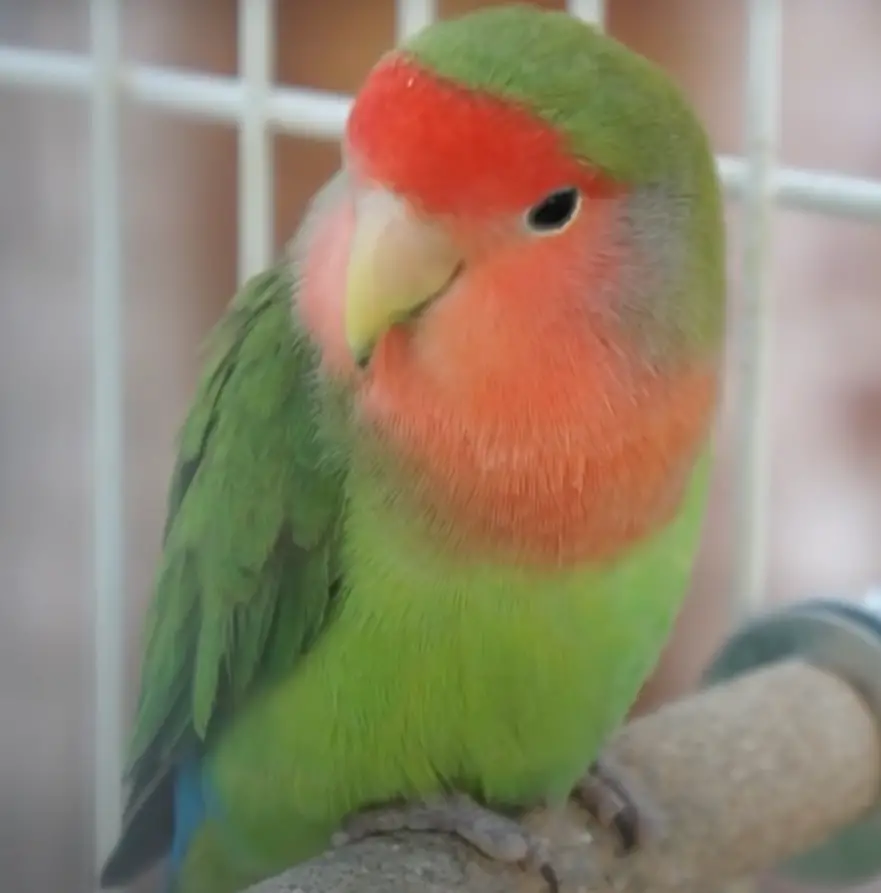
Fun and Interesting Facts about Love Birds
Social butterflies: These adorable birds are highly social and form strong bonds with their partners and human companions. They enjoy spending time interacting, preening, and cuddling with their loved ones.
Expert nest builders: When it comes to creating a cozy home, lovebirds are the masters. They use their beaks to gather materials like twigs, leaves, and feathers to construct intricate nests, showcasing their remarkable construction skills.
Affectionate groomers: A unique behavior of lovebirds is their mutual grooming ritual called “allopreening.” They use their beaks to gently clean and groom each other’s feathers, strengthening their bond and promoting social harmony within their flock.
Colorful personality: Don’t let their small size fool you—lovebirds are bursting with vibrant personalities. They are known for their playful and energetic nature, entertaining their owners with their acrobatics and cheeky antics.
Vocal storytellers: These feathered chatterboxes are excellent communicators. They use a wide range of vocalizations, including chirps, whistles, and squawks, to express their emotions, convey messages, and even imitate human speech.
Avid chewers: Lovebirds have strong beaks that they love to put to good use. They enjoy chewing on various objects, including toys, perches, and even bits of wood, which helps keep their beaks trimmed and provides mental stimulation.
Monogamous creatures: Once lovebirds find their perfect match, they stay committed for life. They form strong pair bonds and rely on each other for companionship, mutual grooming, and even feeding each other as a display of affection.
Inquisitive explorers: With their curious nature, lovebirds love to explore their surroundings. They enjoy investigating nooks and crannies, climbing on perches, and investigating new toys and objects in their environment. Creating a stimulating and enriching space for them to explore is essential for their overall well-being.
Owning a Love Bird as a Pet
Overall, owning a lovebird as a pet is an enchanting and rewarding experience that brings joy, companionship, and a whole lot of love into your life. These small parrots captivate with their vibrant personalities, affectionate nature, and playful antics. From their social nature and loyal bonds to their impressive mimicry and acrobatic skills, lovebirds are feathered charmers that will steal your heart.
However, it’s important to remember that owning a lovebird requires dedication and responsibility. Providing a spacious and stimulating cage, along with a variety of toys and enrichment, ensures their physical and mental well-being. Socialization and training are key to fostering a strong bond and helping them thrive in a human-centric environment.
While lovebirds can live for many years, their lifespan depends on proper care, nutrition, and a stress-free environment. Regular vet check-ups and a balanced diet contribute to their overall health and longevity.
In the end, the joys of owning a lovebird as a pet far outweigh any challenges. Their vibrant personalities, affectionate nature, and engaging behavior make them delightful companions. So, if you’re ready to embark on a journey filled with love, laughter, and feathered entertainment, a lovebird may just be the perfect feathered friend to bring into your home.

Alan Winters
Alan is a dedicated bird enthusiast and experienced writer who has been sharing insights on bird care and behavior for several years. With a passion for parrots in particular, Alan has a deep understanding of their unique needs and behavior patterns.
As a trusted authority in the field of bird care, Alan takes pride in sharing accurate and up-to-date information with his readers. Through his writing, he aims to educate and inspire bird owners of all experience levels to provide the best possible care for their feathered friends.
When not writing about birds, Alan can be found volunteering at local bird sanctuaries and rescues, where he enjoys putting his knowledge and experience to use helping birds in need.


